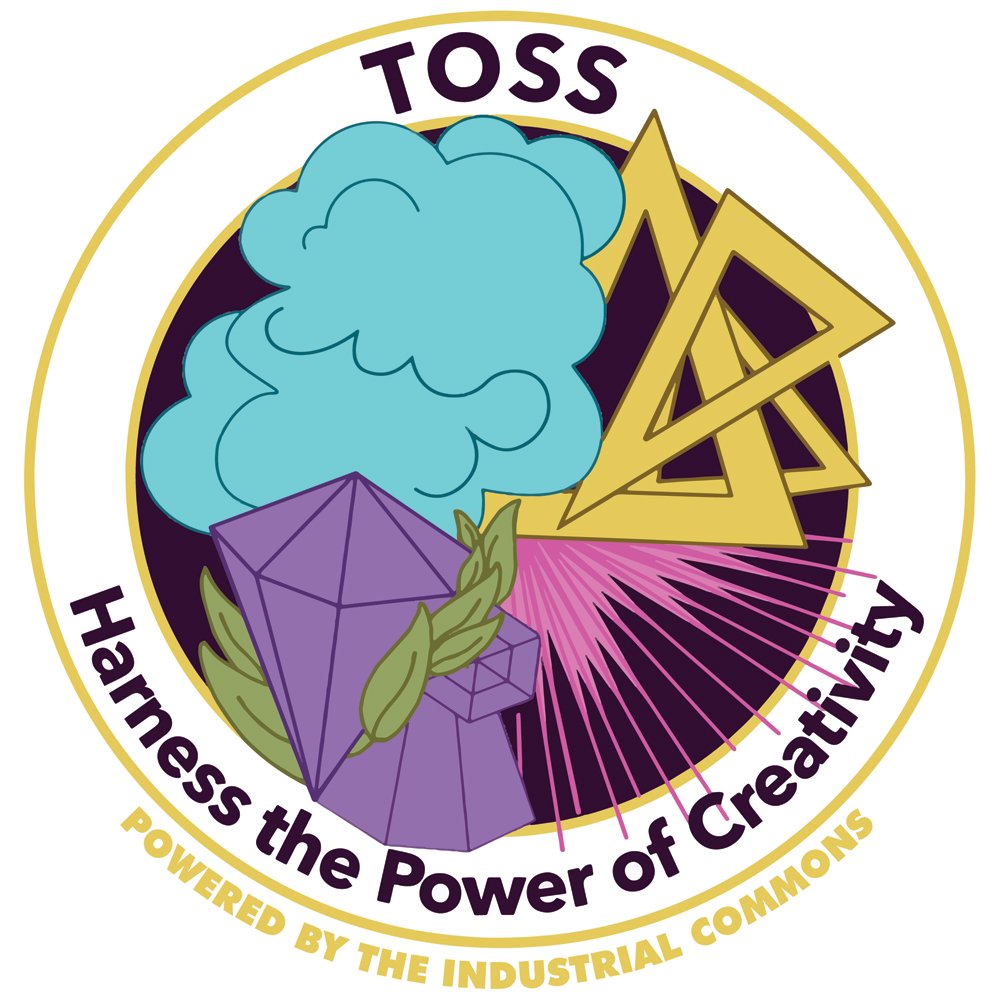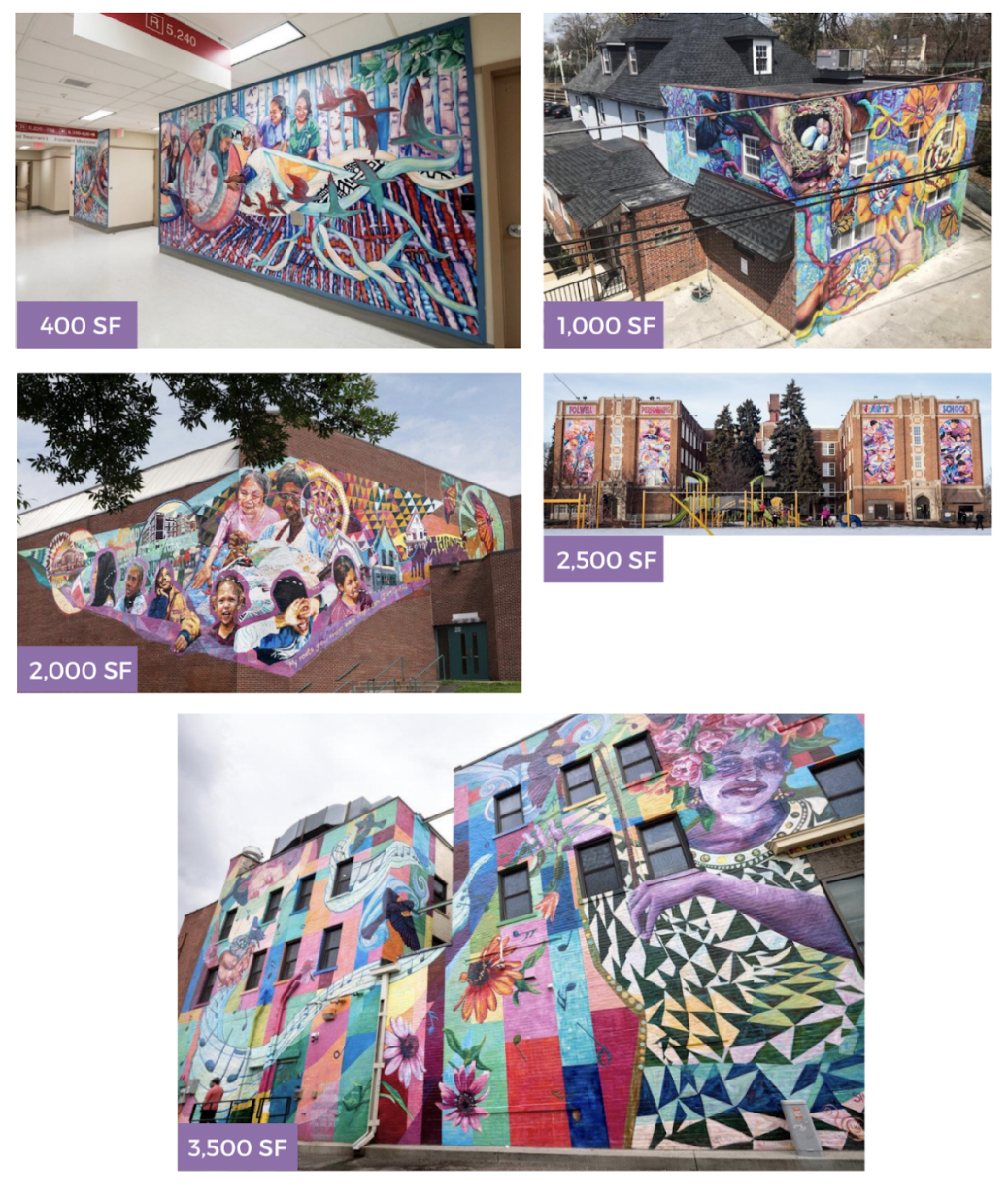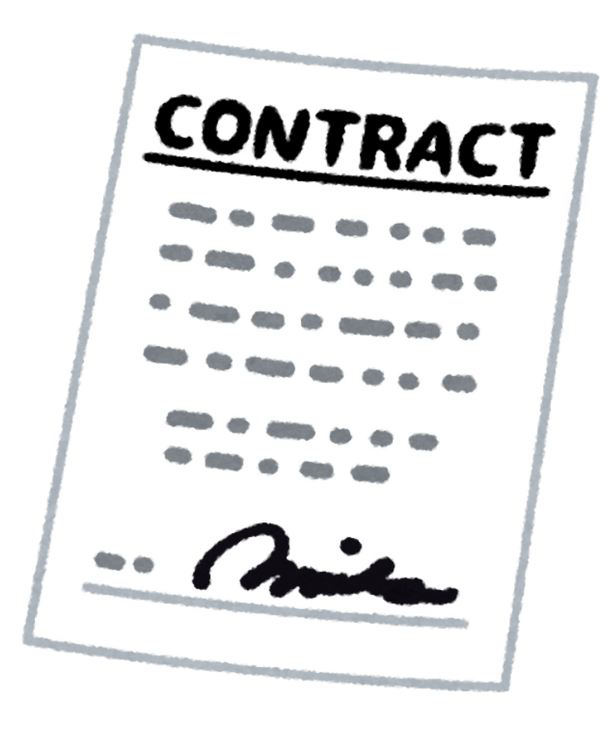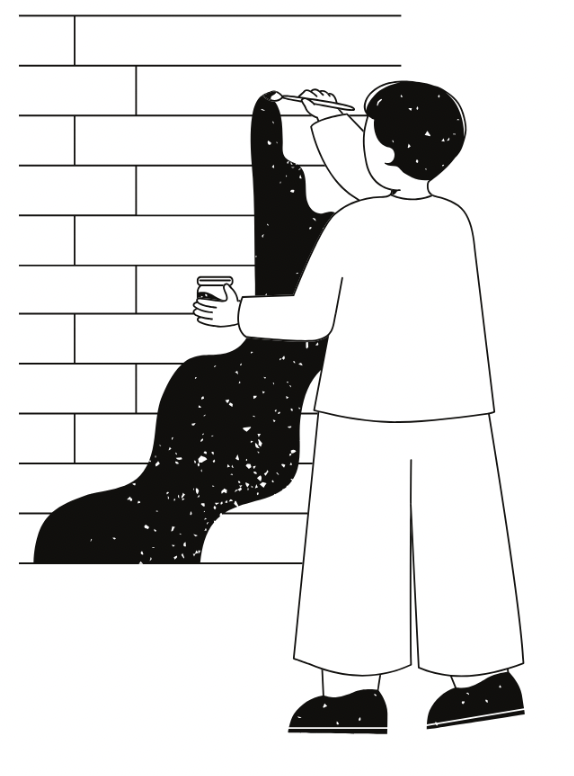Best Practices for Mural Making
Murals are a great way to draw attention and energy to your building. A study called the Social Impact of the Arts Project (SIAP) demonstrated that communities with vibrant cultural life (including public art) experience stronger civic engagement, better health, schooling, personal security, and economic revitalization. This is called a thriving cultural ecology. Planning a mural for your building is a conversation between your budget, timeframe, and capacity for community engagement. The following are learnings we’ve gathered on this topic.
TOSS is always interested in collaborating! Below you will find our guiding principles for initiating a collaboration.
Your Budget
The cost of a mural is mostly driven by three factors: size, the experience of the muralist, and whether the community participates in the design and painting of the mural.
Additional Investments to consider
Photographer - Hiring a photographer to document the project and create images that can be used to promote both the building and the artist is a great investment -
Merch - create an additional contract with the artist to create graphics, related to your mural for merch!
These murals by GoodSpace Murals may help you visualize the square-footage of murals on real buildings.
Your Timeframe
Creating a professional, commissioned mural typically involves several stages and can take between two and a half to five months.
Artist call | 1-2 months
Assuming you don’t have an artist in mind, you will need to develop a bid or artist call. This document should have the general concept, budget, timeline, criteria that spells out what you hope to see in a candidate (experience level, connection to the theme, style, etc). Include a clear deadline for the artists to submit a resume and portfolio.
Pro tips:
Consider having a panel review your applicants. You will need to have criteria that align with the artist's call for them to score the candidates appropriately.
Don’t ask the artists to come up with a design for your wall as part of their application. This work is extremely labor intensive.
Artist Contract | 1-2 weeks
Creating a contract that spells out the terms and conditions of the project is critical so all parties are protected. The contract should be detailed and include sections such as (but not limited to):
Terms of Engagement
Deliverables
Place of Work
Time
Payment
Independent Contractor Agreement
Insurance
Tools and Supplies
Contract Administrator
Termination
Termination of Contract for Cause
Termination for Convenience
Assignability
Findings Confidential
Media, Publication, Reproduction and Use of Material
Ownership and Use of the Artwork
Controlling Law
Severability
Consultation and Design | 1-2 months
Concept development can take 2-3 months depending on the complexity of the project and artist availability. The number of revisions an artist will undertake should be clearly established in the contract.
Painting | 1 - 4 weeks
Painting can take 1-4 weeks depending on the size and intricacy of the mural, the weather, and rental availability. In the contract it should be spelled out what should be done in the case of unforeseen circumstances - sickness, inopportune weather, or other considerations.
Your Community Engagement
Actively involving community members in both the decision-making process and mural creation fosters enduring bonds between the community and your business. Genuine community development thrives on inclusive participation, magnifying the shared vision of those most impacted by the mural's presence.
Working with TOSS on a Public Art Project
TOSS is always interested in collaborating on community-led public art projects. Because our organizational mission is to amplify the vision of The Industrial Commons we have a few guiding principles that help us select projects.
Project Themes
Our projects or collaborations must amplify themes related to 1) The future of work, 2) Environmental Stewardship, or 3) Civic Engagement.
Project Management
Our projects must be organized around democratic decision making. For example, if we are creating a mural, there must be a community steering committee making key decisions for the project. The steering committee must be a diverse group of people who either live in the neighborhood the art will be installed, or have significant connection to the theme.











